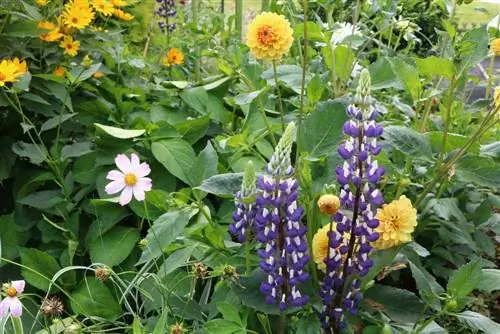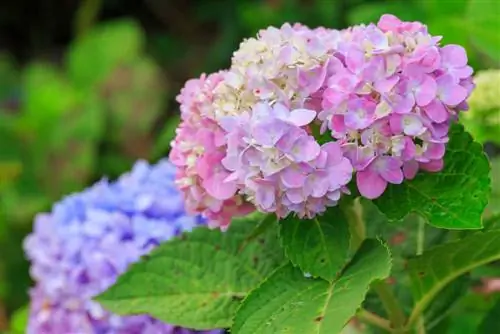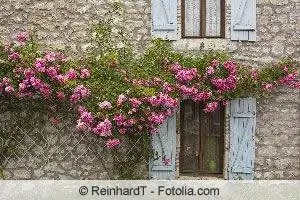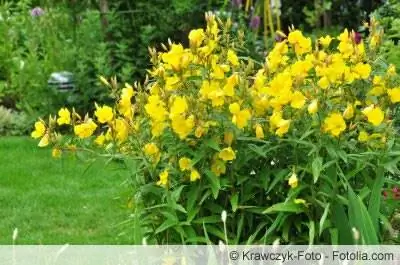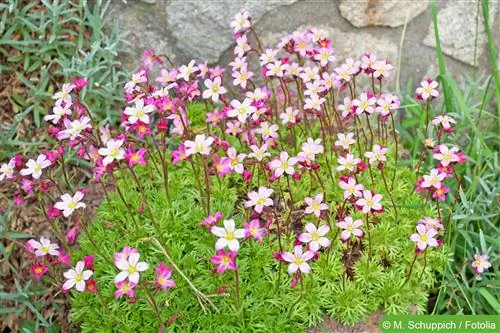- Author admin [email protected].
- Public 2023-12-17 03:39.
- Last modified 2025-06-01 06:48.
The generic term saxifrage (Saxifraga) refers to the saxifrage family. This includes an entire species system with up to 500 representatives. It is not always easy to distinguish between individual species, especially since there are some typical plants that only occur in a single region.
The name saxifrage comes from the mistaken assumption that the plant can blow up stones just because it often grows in crevices in rocks. According to the medieval theory of signatures, it was assumed that the saxifrage could be helpful against bladder stones because of its hard bulbs. Even today, some species are still used for medicinal purposes or as raw food containing vitamin C.
The saxifrage and its uses
Saxifrages come in many different species, each with their own preferences regarding location. Around 40 different species occur in temperate and cold climate zones such as the Alps. Even in extreme locations such as Valais, there is a variety that holds the altitude record of more than 4,500 meters. However, most gardeners know the plant as a cushion perennial or ground cover. Many rock gardens have a variety of plants from the saxifrage family. There are 12 so-called sections of the saxifrage, which are divided into around 500 species. The most famous ones are:
- Two-flowered saxifrage, Saxifraga biflora
- Leafless saxifrage, Saxifraga aphylla
- Lawn saxifrage, Saxifraga rosacea
- Shadow saxifrage, Saxifraga umbrosa
The saxifrage is said to have great endurance and great resistance. This is certainly necessary because it often occurs in extreme situations. In our gardens, the saxifrage is used between decorative stones, as a border around pond areas, in beds or in planters.
Some of them produce very beautiful flowers, which is why not only the more or less thick and different green parts of the plant, but also the different flower colors are the reason for their popularity. For example, the variety Saxifraga arendsii produces flower stalks 20cm high with dark red flowers. These are often picked for the small vase. This saxifrage is not a naturally occurring plant, it was developed through breeding. Apparently every variety of saxifrage has its own flower color and therefore represents a great variety.
Saxifrage Locations
The saxifrage wants permeable and humus-rich soil that is fresh and nutrient-rich. Here it grows abundantly and likes to produce its pretty flowers. But there are also varieties that thrive with significantly less comfort underfoot. They can practically be sown between cracks in the wall and make a frugal living there. That's why this plant variety is ideal for populating rock gardens and dry stone walls. They can tolerate drought rather than waterlogging of the soil. The fine-leaved varieties in particular should receive regular moisture. The variants with the thick-fleshed leaves can survive without water for a while, but they will not continue to grow during this time.
Tip:
Saxifraga stolonifera is suitable for indoor cultivation.
Sowing and planting out
If you want to create a rock garden, you can either grow the selected saxifrage varieties in a seed bag or buy them as small plants in the garden center. There may also be a neighbor who has saxifrage plants in their yard that they would like to share in the fall. The usual procedure applies to sowing from seeds. The seeds are scattered widely over the area to be planted, lightly raked in and lightly moistened with water. This should continue to be carried out in a controlled manner, especially when the season is dry.
Young plants from the garden center can be planted almost all year round. The water supply must then be guaranteed in accordance with the heat.
Whether the plant prefers to be in partial shade or in the sun, which soil it prefers and what else needs to be taken into account will be stated either on the seed bag or on the care label on the flower pot. Here each variety will have its own preferences. What they all have in common, however, is their aversion to wet feet.
Special attention should be paid to the saxifrage when planted in a flower pot or on the grave in the cemetery. Here, as well as in the garden, the soil can be made more permeable with a little sand. If a saxifrage has been selected to find a new home under a tree or shrub, it will appreciate an addition of compost. An acidic soil can be deacidified with a little lime. The soil does not need any more attention for planting saxifrage plants.
Saxifrage - propagation
Year-old plants can be rejuvenated by division. Most of the time, older saxifrage plants no longer look so beautiful because they “age” from the middle. This means that they become brown and dry in the middle and only towards the edges are they still green or form flowers. That's why you don't have to throw a plant in the trash can. In this case there are two options:
- Divide the plant so that the inner areas become the outdoor area and can sprout again
- Separate the green and fresh parts of the plant around the dried out center with a spade or knife and use them as new individual plants.
These can be planted either as individual plants or together again as a single new plant. Most of the saxifrage varieties grow and thrive splendidly, so dividing them is definitely worth it. The divided plants can certainly be used in many garden areas. The saxifrage also looks beautiful in the front garden or on the stairs in a beautiful old pot.
What you should know about saxifrage in brief
Profile
- Height: 2.5 - 4.5 cm
- Planting distance: 15 - 45 cm
- Bloom: from early spring to autumn
- Substrate: well-drained, stony, calcareous or any other garden soil
- Location: partially shaded to full sun
- Overwintering: hardy, partly evergreen
This diverse genus, whose decorative leaf rosettes grow over stone with dense cushions or lawns, is an integral part of every rock garden. Unless otherwise stated, the species are evergreen in mild winters. The small flowers come in red, pink, yellow and creamy white and usually rise upright on stems - occasionally nodding - above the foliage.
Other popular species and varieties
The majority of Saxifraga representatives are rock garden plants, higher species are also suitable for bed planting. From a botanical point of view, they are divided into different sections, four of which are of interest to the hobby gardener. Silver rosette saxifrage (Euazoonia section) forms rosettes with a silvery lime crust with its leaves and produces star-shaped flowers on long panicles in summer.
- Saxifraga cotyledon grows to approximately 60 cm high and 38 cm wide. It has flat rosettes of dark green leaves and feathery panicles of pure white, star-shaped flowers. The variety 'Southside Seedling' reaches a height of up to 30 cm and produces an abundance of white, red-flecked flowers.
- Saxifraga longifolia grows to about 45 cm high and 30 cm wide. It has silvery green leaves and white inflorescences. The variety 'Tumbling Waters' has particularly long, sloping flower spikes.
- Saxifraga paniculata, syn. S. aizoon, reaches a height and width of about 38 cm. It has silvery green leaves and white or pink colored star flowers.
- Moss saxifrage, Saxifraga bryoides (Dactyloides section), produces dense, moss-like mounds of pinnately lobed leaves and thin-stemmed flower spikes in mid to late spring.


